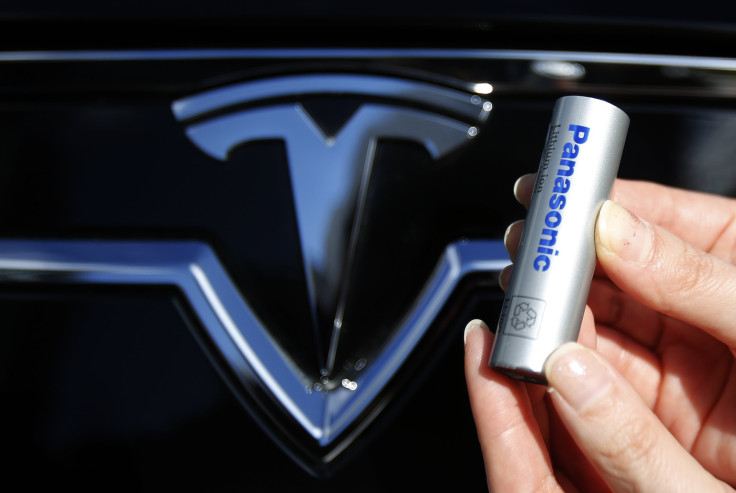Rebuking Tesla, US Traffic Safety Watchdog Says Automakers, Dealers, Advertisers Cannot Claim Safety Ratings Above 5 Stars

UPDATE: Tesla CEO Elon Musk told the AP on Friday he is confident the NHTSA will clear the Model S of any concern over fire risk from puncturing the vehicle's undercarriage battery tray, which contains thousands of 18650 lithium-ion cells manufactured by Panasonic Corporation (TYO:6752).
"In both cases it was a large piece of metal essentially braced against the tarmac," Musk said, referring to the two recent non-fatal accidents in the U.S. involving the Model S battery pack.
Musk added: "... in any kind of low-speed impact, you're fine. Any car, Model S or not Model S, the underside is going to get significantly damaged if you drive over a large metal object."
Original story begins here:
No, Telsa, cars can't exceed five safety-rating stars.
At least that’s what the U.S. National Highway Traffic Safety Administration has said about Tesla’s claim it gave the Model S the highest safety rating of any car in history, at 5.4 “stars.”
The NHTSA, which announced on Monday that it’s launching a “preliminary evaluation” into the two Tesla Model S fires reported in the U.S. in October, released Thursday stricter guidelines on how automakers, dealer and advertising agencies can spin the agency’s various safety ratings.
While the NHTSA didn't name any specific automakers, one sentence appears to be directed right at Tesla: “An advertisement should not claim that a vehicle earned a rating higher than 5-stars.”
The announcement puts to rest a disagreement between Tesla and the agency over Tesla’s use of the raw crash-test data, known as the Vehicle Safety Score. Tesla is right to say that the Model S has earned the highest vehicle-safety score ever, but apparently where it flubbed was to imply the NHTSA gives above-five-star ratings.
This is what Tesla said in August, after the five-star rating was announced by the safety watchdog.
“NHTSA does not publish a star rating above 5, however safety levels better than 5 stars are captured in the overall Vehicle Safety Score (VSS) provided to manufacturers, where the Model S achieved a new combined record of 5.4 stars.”
A lot of Tesla fans would see this as nitpicking by the NHTSA -- after all nobody's arguing that the Model S earned the highest vehicle-safety score ever. Though, as the New York Times “Wheels” blog pointed out in August, the Model S sedan’s top safety score comes with the price of the car:
“The money spent on engineering and building the luxury car is also a factor [in its high safety rating], and that may be harder to replicate in E.V.’s aimed at the mass market.”
The Model S starts in the U.S. at $64,570 for the 205-mile range and $73,570 for 265 miles per charge. The question is: when Tesla starts making that mass market lower-priced EV, will it be able to provide ideal range and equivalent safety ratings?
The NHTSA announcement also outlines how its ratings can be presented in advertising. For example, advertisers must make clear the different ratings for different crash scenarios. For example, if the frontal-crash rating is provided, the right-front crash rating must accompany it in order to clarify the differences, or auto sellers can use the combined frontal rating, which the NHTSA also provides. The purpose is to avoid the practice of sellers that cherry-pick the highest-ratings numbers that could mislead the public on exactly which type of crash scenario is getting the rating.
The NHTSA also said sellers can't mislead the public by juking the numbers. Apparently, there have been instances where sellers have combined two ratings to get numbers of stars above five. For example,a seller might say a car has “seven stars” for side impacts by adding together four stars for side impacts to the front seating position and three stars for the same impact on the rear-seating position.
A SERIES OF POPPING SOUNDS
Meanwhile, the NHTSA’s investigation is a big question mark right now. While the vehicle’s structural integrity is no longer in question, the company’s use of about 7,000 individual 18650-sized (a little bigger than a typical AA) battery cells manufactured by Panasonic Corporation (TYO:6752) to power the vehicle could fall under NHTSA scrutiny; or not -- that verdict is still out until the agency issues another decision.
“Batteries in an electric car are maintained at a high state of charge to maximize driving range. Unfortunately, that practice also maximizes the potential for a field failure event,” writes John Petersen, executive vice president of ePower Engine Systems, a maker of hybrid drivetrains for heavy trucks, in his column on Seeking Alpha. “Since Tesla wanted its cars to have the longest possible driving range with the lowest possible battery weight, it chose a relatively unstable high-energy battery chemistry while its competitors who make electric cars with shorter ranges chose safer and more stable chemistries.”
The Nissan Leaf, the most popular EV based on sales volume, uses 192 less volatile lithium-ion batteries to give the sub-$35,000 subcompact its roughly 80 miles of range, which greatly reduces the chances of a thermal runaway event where one cell is punctured, short circuits, flares up, causing the next cells to catch fire and so on like a string of firecrackers. (The video of the Tesla Model S fire in Yucatan Mexico on Oct. 16 shows what appears to be a thermal runaway event involving a series of popping sounds followed by a secondary flare-up after the fire started.)
Petersen is drawing his information from an October 2012 study on vehicle-battery safety, a kind-of roadmap on the different types of battery systems used in EVs by Daniel Doughty of Albuquerque-based Battery Safety Consulting Inc. and Ahmad Pesaran of the National Renewable Energy Laboratory.
© Copyright IBTimes 2025. All rights reserved.






















